‘THE NEED FOR AN AUTONOMOUS POLITICAL SPACE FOR IJAWS IN A RESTRUCTURED NIGERIA: AN AFFIRMATION OF THE KAIAMA DECLARATION’ BEING LECTURE DELIVERED MY MOST SENIOR COMRADE WISDOM ONIEKPAR IKULI ON THE OCCASION OF THE 2022 NATIONAL CONSTITUTIONAL CONVENTION OF IJAW YOUTH COUNCIL (IYC) HELD HERE AT ATABA TOWN, ANDONI LOCAL GOVERNMENT AREA OF RIVERS STATE ON SATURDAY 24TH SEPTEMBER, 2022.
PROTOCOL
I wish to start this historic and very memorable lecture by thanking the President of the most revered Ijaw Youth council (IYC) Worldwide and Crown of the Ijaw Nation; Deacon Peter Timothy Igbifa and the very outstanding National leadership of the Council for painstakingly putting this National Convention together.
But more importantly, for finding me worthy to talk to the multitude of our unique and very noble youths on the need for an Autonomous Political Space for Ijaws in a Restructured Nigeria: An Affirmation of the Kaiama Declaration which is not only appropriate but very timely too considering the prevalent political realities in the country as we countdown to the 2023 general elections.
INTRODUCTION
As we proceed, we shall take deeper look at two key terms which are central in this discourse. This is important because everything we shall talk about in this lecture revolves around them. These key words are ‘Autonomous’ and ‘Restructuring’.
But before cruising at the intellectual altitude and heights that this lecture we shall take us, it is sacrosanct to reaffirm that this is a gathering of Ijaw youths who are drawn from different parts of Ijaw Nation. It is also possible that some of our brothers and sisters even came in from outside the shores of Nigeria to participate in this historic event.
There are many of us who are proud and are very happy that they are Ijaw. There is another category that only know themselves as Ijaws but do not know their true identity.
This lecture shall lecture to unravel some mysteries about Ijaws and also proffer answers to questions that have been pricking many minds. I am optimistic that at the end of this lecture many minds shall be liberated knowing that real wealth, prosperity, growth and development begins with the mindset of the people.
WHO ARE IJAWS, WHERE ARE THEY FOUND AND WHY ARE THEY SO BLESSED?
As we go deeper on this self-rediscovery in line with the principles of Neo-Ijawism which epitomizes the spirit of Ijaw Consciousness, it behooves on us to start by knowing our true identity as Ijaws and then proceed to connect with the issue of Autonomous Political Space for our great people in a Restructured Nigeria in line with the letters, spirit and dictates of the famous ‘KAIAMA DECLARATION’.
While several scholars and writers have tried to write about Ijaws from their respective perspectives, I will not bore us with all of that but will rather dwell on the common facts that Ijaws are among the most ancient people in the world. They are not only indigenous Niger Deltans but some of the oldest Africans.
Records show that Ijaws (Ijos) who speak Izon language with many dialects inhabited the lower Niger and Niger Delta as far back as 500BC. Ijaws are among the most prominent tribes that are associated with the history of the Niger River Delta which is one of the largest and most beautiful deltas in the world and the largest delta in Africa spanning approximately over 14,000 square miles which is 36,260 square kilometers.
The above also put to rest the argument about the geographic Niger Delta and the Political Niger Delta that was created by President Olusegun Obasanjo in 2000 with the addition of Imo, Abia and Ondo to the geographic natural Niger Delta of Bayelsa, Akwa Ibom, Edo, Delta, Rivers and Cross River in order to assuage the protest of South East and South West when he wanted to establish the Niger Delta Development Commission (NDDC), thereby making the Niger Delta to be synonymous with crude oil production which is not true.
The area is actually called the Niger Delta because it is the area where all the rivers, creeks and tributaries in Niger Area (Nigeria) empty their mouths into the ocean and seas. Bayelsa State is peculiar because it is below sea level and that is why our terrain is different. There are several deltas in the world including Amazon, Mississippi, Mekong, Nile, Okavango, Sacramento-San Joaquin River, Mississippi River Delta etc. It will suffice us to know that most of these deltas do not have crude oil and gas.
It is therefore imperative to correct the erroneous mistake about the rich Niger Delta.
Ijaws are found in Rivers, Delta, Edo, Kogi, Benue, Imo, Abia, Adamawa, Niger, Akwa Ibom and Bayelsa states in Nigeria with Bayelsa State as the only homogeneous Ijaw state. Ijaws are also found in Sierra Leone, Gabon, Cameroon, Equatorial Guinea, North America and the Caribbean. While many were sold into slavery during the slave trade era, others migrated through sea and coastal routes since fishing and farming are the basic or primary occupation of Ijaws.
Ijaw people are not only blessed, they are unique in countless areas and I won’t be held for intellectual contempt if I make bold to say that Ijaw is the greatest tribe in Nigeria despite several fruitless efforts to undermine or water down the immeasurable and invaluable sacrifices of Ijaws.
CONTRIBUTIONS OF IJAW TO THE SOCIO-ECONOMIC AND POLITICAL PROSPERITY OF EUROPE
Undisputable data show that Ijaws are the first people in the geographic space of what is called Nigeria that had encounter with Europeans. The encounter which took place around the 12th, 13th and 14th centuries was first with the Portuguese who arrived as Adventurers and thereafter became equal trade partners of Ijaws when they saw the abundant natural resources in the area.
This was before the era of slave trade and formal colonization of Africa as part of the implementation of the resolution of the criminally induced ‘BERLIN CONFERENCE’ of 15th November, 1884 – 26th February, 1885 which was centred on the Scramble and Partition of Africa which has left a bad un-healable scar on Africans and the African continent.
Statistically, at least twelve million men, women and children migrated or were forcefully taken away from Africa. Most of those persons were the able bodied people, highly intelligent, well-mannered and cultured. They were also the most handsome and most beautiful.
Ironically, a sizeable number of the above figure were Ijaws since there were roads then and the Europeans only navigated through river and sea routes where Ijaw lived.
During the same period under review, it was the palm oil, timber and other abundant natural resources from Ijaw Nation before the advent of crude oil and gas that were used to sustain the European economy.
RESOURCEFULNESS OF IJAWS DURING THE SLAVE TRADE AND LEGITIMATE TRADE ERAS
Ijaws have never been lazy and unproductive people as some tribes are now trying to describe and designate Ijaws. Ijaw land had very outstanding merchants and traders that engaged in several trading activities including import and export.
The first and largest seaport in what we now have as Nigeria was in Ijaw land. We are talking about the Burutu Seaport. We had other seaports and slave terminals at Bonny, Twon-Brass, Port Harcourt, etc.
King Jaja of Opobo at a point was the richest slave merchant. He competed favourably with European merchants and was far richer than many of them. It was envy and jealousy that made them to conspire against him and other Ijaw and African Kings. Some were poisoned, others were accused wrongly and banished, while some were dethroned and imprisoned.
IJAW TRADITIONAL DEMOCRACY
Europeans never exported democracy to Ijaw people. By the time the Europeans arrived, they discovered that Ijaw people were already living organized and responsible lives in City-states with well-tailored democratic and administrative structures.
Ijaws had a well organized structure with various institutions and arms of government. Ijaws had the Judiciary, Legislature and Executive Arms of government which were manifested in the administrative structure and organogram of the Amanyanabo-in-Council, Pere-in-Council, Okilom Ibe-in-Council, Ibenanaowei-in-Council, Obenobhan-in-Council and other traditional Stools and structures in Ijaw land who all had Paramount Rulers and representatives of communities in the various Councils that formed the executive and judiciary arms.
While the legislature (General Community Assemblies) were always held at the village squares where men, women and youths including children gathered from time to time to deliberate on issues.
Able bodied men served as police to enforce law and order. While strong, brave and very courageous men served as warriors in various War Canoe Houses. They formed and made up the Defence Architecture of their respective clans and kingdoms.
IJAWS AS CATALYST IN THE FORMATION OF THE NIGERIAN STATE
What we have today as Nigeria all started in Ijaw land precisely at Akassa in present day Brass Local Government Area of Bayelsa State. The British Crown had earlier issued trading license to the Royal Niger Company that was operating in the Niger Delta. But at a point the RNC wanted to monopolize the businesses by attempting to push away Ijaw kings like Jaja of Opobo, King of Ibanichuka of Okrika, King Amachree (Amakiri) of Kalabari, King Akalisuo the Odide Ediro of the ancient Engenni Kingdom, King Fredrick William Koko of Nembe.
When the provocation got to an unbearable level, King Fredrick William Koko mobilized War Canoe Houses and attacked the well-fortified headquarters of the Royal Niger Company. Many whites and their black armed guards were killed, while 43 whites were captured alive but were later roasted and eaten over kegs of palm wine.
The British later reinforced and organized a reprisal on the 29th January, 1895 which is now known as the infamous and inglorious ‘Akassa Raid of 1895’.
Over 2000 people mostly women and children were massacred in what many scholars now describe as a Genocide. The sad development attracted global condemnation that forced the British Crown to revoke the trading license of the Royal Niger Company and in its place, a formal government was established.
The frosty relationship between Ijaws and the Europeans who couldn’t control or force their acceptance after the amalgamation of the Southern and Northern Protectorates led to the relocation of their administrative capital to Calabar and later to Lagos and now the Federal Capital Territory (FCT) Abuja.
Ijaw leader and foremost Journalist Chief Ernest Sisei Ikoli from Nembe started the Nationalist Struggle for the independence of Nigeria from British colonialism alongside his older friend Sir Herbert Macaulay who was also a publisher. Unfortunately, both of them never lived to enjoy the fruits of their labours. While Sir Herbert Macaulay died on 7th May, 1946, Chief Ernest Ikoli who was mentor of Chief Obafemi Awolowo died on 21st October, 1960 few days after Nigeria’s independence at the young age of 67years.
CONTRIBUTIONS OF IJAW NATION TO THE SOCIO-ECONOMIC AND POLITICAL SURVIVAL OF THE POST-INDEPENDENT NIGERIAN STATE
Since the discovery of crude oil and gas in Ijaw land precisely at Oloibiri-Otabagi in Ogbia Local Government Area of Bayelsa State on 15th January, 1956 and subsequent discovery of others, the Ijaw Nation has continued to shoulder the economic burden of the Nigerian state.
Politically, it was Ijaw leaders like High Chief Harold Dappa-Biriye and Chief (Sen.) Dr. Melford Obiene Okilo (CON) that made it possible for the formation of the First National Government in Nigeria when they formed political alliance between the Niger Delta Congress (NDC) that was founded by Dappa-Biriye with Okilo as the only elected National Assembly member under the platform of NDC and the Northern Peoples Congress (NPC).
That alliance led to the emergence of Sir Alhaji Abubakar Tafawa Balewa as Prime Minister who later appointed OKilo as a Parliamentary Secretary due to his exceptional brilliance, intelligence, eloquence and resourcefulness.
State creation (Stateism) which was a detour from regionalism with the creation of twelve (12) states including Rivers state on 27th May, 1967 just before the outbreak of the avoidable thirty (30) months Civil War was the idea of High Chief Harold Dappa-Biriye and other Ijaw people who wanted a separate political identity and space for Ijaws who were deliberately balkanized into different provinces in a well-orchestrated bid to weaken them and make them minorities in their political units they were divided into.
What successive administrations have continued to do to Ijaws as continuation of the evil plans of the British who were bent on getting back at Ijaws by all means because of the abundant natural resources of Ijaws and the several resistances and renaissance that Ijaws waged against their exploitative tendencies.
I can go on and on to talk about the unquantifiable sacrifices of Ijaw people to the formation, survival and sustenance of the Nigerian project. I can make bold to say without fear of equivocation that no tribe or ethnic group has sacrificed like Ijaws.
Having traveled the length and breadth of the historical evolution of Ijaws as a unique people, it is now paramount and ideal too, to look at what ‘AUTONOMOUS’ is all about. Autonomous in its simplest definition or meaning refer to having the freedom to govern itself or control its own affairs.
Situating the above to our contemporary struggle and subtle acceptance to operate within the Nigerian state, you will see an obvious, very identifiable conflict meaning autonomous does not fit appropriately into our prevalent situation.
I will therefore prefer to borrow or import the word ‘QUASI-AUTONOMOUS’ which qualifies for partial autonomy which is the best word. I say this because you cannot talk about autonomy and still remain in another independent country except, we are talking about replication of the VATICAN CITY and PAPACY been independent state within Italy which is now near impossibility for another reoccurrence of similar arrangement.
The second is the case of the much talked about ‘RESTRUCTURING’. Restructuring simply means reordering, rearrangement and reorganization of the system or government from a state of near failure, unproductivity and inefficiency to a state of success, productivity, efficiency and inclusiveness.
It entails devolution of power, decentralization and reduction of the powers of the federal government and giving more powers and responsibilities to the federating and components units in this case, the states and local government areas.
It talks about fiscal federalism where the component units have financial autarchy (independence) and they are all allowed to control natural resources that are domiciled in their respective domains and then mandated to pay ROYALTY as practiced in the United States of America that we tailored our democracy and Presidential system after. The above shall encourage healthy competitions and productivity. It will also make states to identify their areas of strength and areas that they have comparative advantages.
It talks about creation of additional states including the two being demanded by Ijaws: TORU-IBE State for Ijaws in Ondo, Edo and Delta states and OIL RIVERS State for Ijaws in Rivers and Akwa Ibom states.
The above will give Ijaws high sense of belonging as against the present situation where Hausa/Fulanis, Yorubas and Igbos each own more than four or five states each, while Ijaw that is the fourth largest ethnic has only Bayelsa State which is home to all Ijaw people all over the face of the earth.
Ironically, Bayelsa state has only eight (???? local government areas as against states like Kano that has forty-five (44) which gives its enormous advantages since allocations are shared according to numbers of local government areas per state.
Restructuring talks about the need for establishment of State Police to curb rising cases of insecurity. It demands for local government autonomy since LGAs are the closest tier of government to the grassroots. It also amplifies the need for even and equitable distribution of available resources including federal appointments as against the lopsided appointments which is often based on religion and ethnicity.
It demands for freedom for component units to operate optimally as against the present Feeding Economic system where states and local governments areas depend on allocation from the federation amount. Surprisingly, the federal government that shares and allocate the monthly resources that are mopped up from the various states and local governments does not produce anything.
WHAT RESTRUCTURING MEAN TO IJAW NATION
For sixty six (66) years, the Ijaw Nation has been carrying the economic burden of Nigeria which is made up of over 350 distinct ethnic tribes and groups which were hitherto independent empires, emirates, nations, clans and kingdoms before the ill-conceived amalgamation of the Northern and Southern Protectorates in 1914 which was primarily meant to save the economy of the Northern Protectorate that was running at deficit.
The Ijaw Nation is likened to a giant that has a very big body frame with tiny legs. The tiny legs is the Ijaw Nation that carries the big body and burden of the rest of Nigeria. Even as the Goose that lays the golden egg, it remains very malnourished.
It is given only peanuts and crumbs that falls from the tables of those at the helm so that it can survive and continue to lay eggs until perhaps when the laying in this case the crude oil and gas will dry up.
Fiscal Federalism will translate to more resources and wealth to the owners of the natural resources and this shall translate into more developments even though some of the poor, visionless and unproductive accidental public office holders and politicians have also contributed immensely to the gross underdevelopment of the Niger Delta and the Ijaw Nation because most of them only believe in the misappropriation, mismanagement, misapplication, embezzlement, conversion and diversion of our commonwealth and patrimony, then turn around to blame the federal government and the oil multinationals.
But in the midst of misguided and primitive resource despoliation and plundering by our people who cannot justify the 13% derivation and monthly allocations from the federal amount, there is need for Ijaws to still strongly demand for Restructuring and total ownership and control of the natural resources that are domiciled in Ijaw land in line with the spirit of the famous ‘KAIAMA DECLARATION’ of 11th December, 1998.
It is pertinent to use this opportunity to urge all Ijaw sons and daughters to pull off the ‘INFERIORITY GARB’ that was deceitfully and forcefully worn Ijaws. Ijaws are not ‘minority’ and can never be minority. The Sir Henry Willink Commission Report of 23rd November, 1957 to 12th June, 1958 which is actually the first ‘CENSUS’ that was held in Nigeria designated Ijaws as the fourth largest tribe in Nigeria after Hausa/Fulani, Yoruba and Igbo. The 2012 United States of America Embassy in Nigeria Report also reaffirmed Ijaws as the fourth largest tribe in Nigeria. Fourth or Number 4 out of over 350 can never be a failure or a minority.
The discriminatory, insultive, derogatory, divisive and destructive concept of WAZOBIA was deliberately conceived to spit Ijaws and also erroneously mislead, misinform and at the same time give credence to their concocted lies and grand conspiracies against Ijaws otherwise they could have made it IWAZOBIA.
Finally, it is time for Ijaws in Eastern Zone particularly those in rivers State to close ranks in order to regain their lost glory. Come 2023, head or tail shall be Ijaw. You all know what I mean, Governorship Candidates of all the major political parties are Ijaws meaning that one of them will surely emerge the winner and Governor.
Therefore, there is no need for enmity among brothers. There is no need for fighting or blood shed. Political parties are mere nomenclature. They are likened to vehicles that convey travelers to their destinations. So, let us deemphasize the vehicle and focus on the destination in this case the BRICK HOUSE GOVERNMENT HOUSE.
Almighty God has decided to give Ijaws in Rivers state a second chance which they don’t need to squandered and then turn around to blame others of their self-inflicted woes. It is important to learn so much lessons from the twenty four (24) of our contemporary democracy where Ijaws were relegated and made to play fiddle roles and second class citizens in a state that they are still majority with over thirteen LGAs.
The above was due to lack of unity of purpose, envy, hatred, pull him down syndrome and the deep spirit of Crumbology and Crabology that outsiders should take it inside of my Ijaw brother. The above spirit is not only wrong, it is retrogressive and must be jettisoned.
Let us imbibe and even institutionalize the BROTHERHOOD SPIRIT that our father and sage Chief (Sen.) Dr. Melford Obiene Okilo the First Civilian Governor of this state represented and epitomized.
Any of the Ijaw Candidate that wins should endeavor to carry all others along but above all, they should assemble the best brains in the Ijaw Nation to ensure we don’t only build infrastructure which is also very important but human capital of our great people especially our outstanding youths but most importantly, the economy of Ijaws to make them financially strong.
Thank you so much for the kind attention and God bless.
References:
Anekwe, Luke Nnaemeka. The Untold Story of the Nigeria-Biafra War. New York: Triumph Publishing. 2007.
Ayodele, Akintuotu. Okah, Still Many Creeks to Cross. TELL, August 17, 2009.
Azaiki, Steve. The Evil of Oil. Ibadan: Y-Books, 2009.
Dappa, Biriye Harold J.R. Minority Politics in Pre-and Post-Independence Nigeria. Port Harcourt: University of Port Harcourt Press. ISBN 9782321729.1995.
Dappa, Biriye Harold J.R. Resource Control, Beneficial to Nigerian State. Port Express. African News Service. October 21, 2000.
Ebiegberi, Joe Alagoa. The Akassa Raid, 1895. University of Ibadan Press.1960.
Ebiegberi, Joe Alagoa. The Land and People of Bayelsa State: Central Niger Delta. Port Harcourt: Onyoma Research Publications, 1999.
Etekpe, Ambily. The Politics and Conflicts Over Oil & Gas in the Niger Delta Region: the Bayelsa State Experience. Port Harcourt: Tower Gates Resources, 2007.
Ikuli, Wisdom Oniekpar. Youth Digest: Practical Solutions to Youth Restiveness and Social Vices in the Niger Delta. Port Harcourt: Orus Press Limited. 2007.
Ikuli, Wisdom Oniekpar. General Sani Abacha and the Contemporary Ijaw Nation. Port Harcourt: Orus Press Limited. 2010.
Ikuli, Wisdom Oniekpar. Neo-Ijawism and the Journey So Far. Abuja: Wins Image Limited. 2012.
Ikuli, Wisdom Oniekpar. Fundamentals of the Niger Delta Struggle: The Ijaw Youth Council Perspective. Kaduna: Medusa Academic Publishers Limited. 2020.
Ken, Saro-Wiwa. A Month and a Day: A Detention Diary. United Kingdom: Safari Books (Export) Limited. 1995.







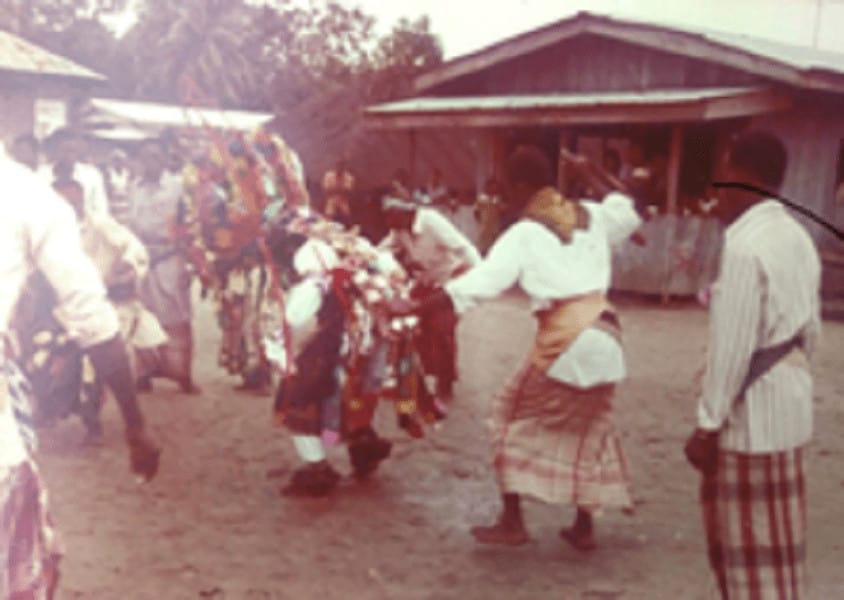
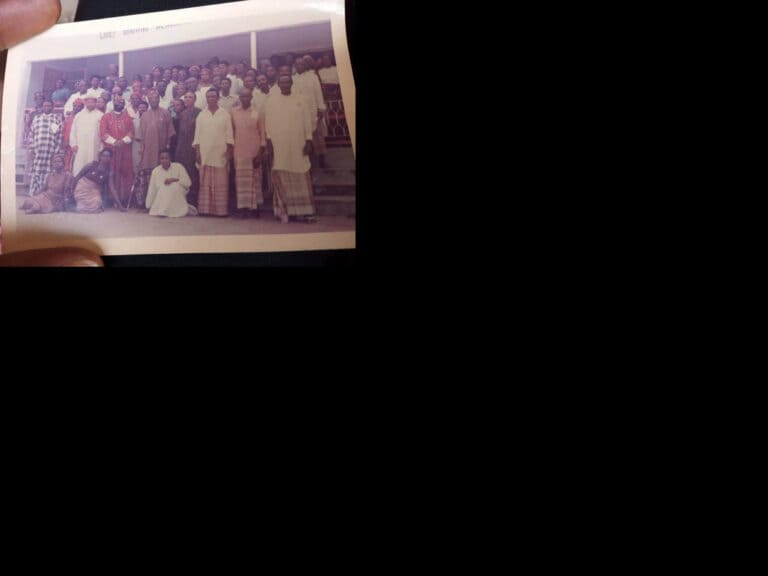
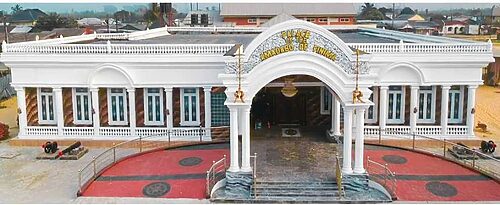
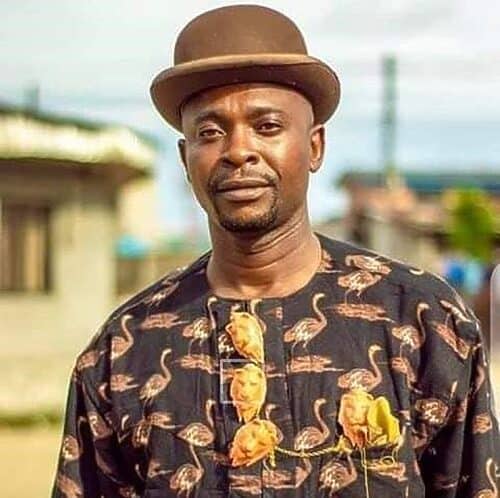 Idatonye Lambert Brown
Idatonye Lambert Brown
You must be logged in to post a comment.